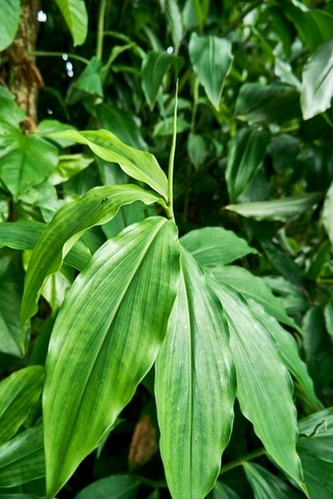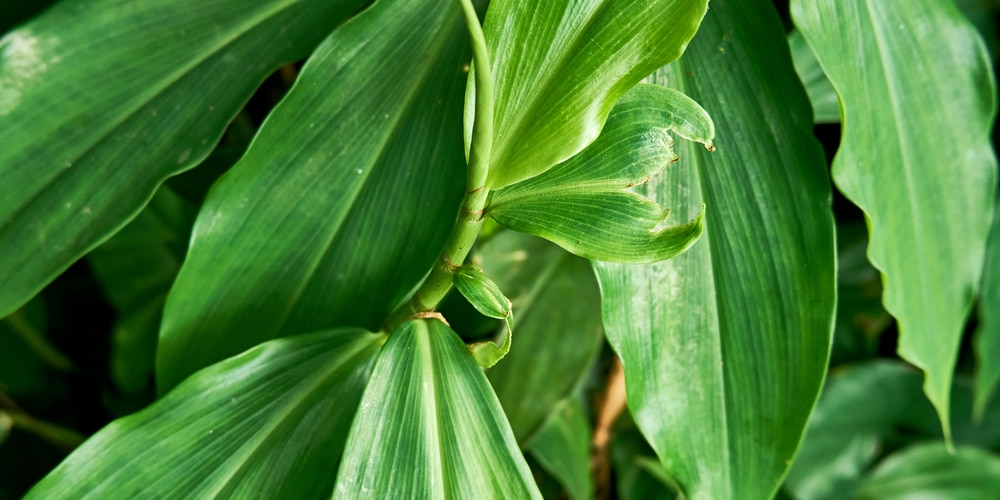The Philodendron Tripartitum is an amazing plant that is beautiful but very much under-appreciated. It has a tropical appearance and would make a great addition to any home. Let’s look at how to grow and care for a philodendron Tripartitum.
What is a Philodendron Tripartitum?

Philodendron tripartitum is part of the Araceae (and very similar to Philodendron Goeldii) family and is native to tropical South America. It can be found growing in Central America, Colombia, Panama, and Costa Rica. This plant can grow quite large and reaches heights of at least six feet over time, especially in the wild. It has split leaves with three lobes that are a minimum of ten inches long and five inches wide.
These plants are hemiepiphytic climbers, which means that they can live on other plants and can even grow on a tree branch from a bird dropping. When planted in the ground they will grow long climbing vines.
Philodendron tripartitum are commonly kept as house plants but can be grown outdoors in the right climate. It’s worth noting that this species is toxic to humans and animals if ingested, so be careful if you have young children or pets.
How to care for a philodendron tripartitum

As with all philodendrons, this species is considered relatively easy to care for, even if you’re a beginner. It does require several special considerations when growing indoors, if you want to grow a healthy specimen.
If you want to grow a Philodendron tripartitum successfully indoors, the best thing is to mimic the conditions found in the natural environment of this species – which are shady and warm with high humidity. Here are some tips to help you care for your philodendron Tripartitum:
Sunlight needs
Place your philodendron tripartitum in bright, but indirect light or in an area that gets partial shade. As with all houseplants, avoid direct sunlight as this can burn the leaves of sensitive plants, causing the leaves to turn yellow and drop off the plant. These plants can be grown on a windowsill or outdoors in warmer locations. You can grow philodendrons outside year-round if you live in USDA zones 9 to 11.
Watering requirements
Water the plant regularly, being careful not to overwater it as this can cause root rot. Watering frequency will depend on conditions, but this species does tend to like to be kept moist during the growing season between spring and summer.
It’s best to water your philodendron tripartitum once or twice a week, depending on its location. For example, if it has been placed near windowsills during warm days, you will have to increase the watering frequency as the sunlight can dry the plant up quickly. If your plant is outdoors, where it receives rainfall, you will need to water it only once every week or two.
Humidity
As a tropical plant, the philodendron Tripartitum likes medium to high humidity and good air circulation. Don’t leave your plant in a room with an active furnace or air conditioning unit, as this will dry it out too much. Aim to create a humidity of at least 50%. This can be achieved by misting your plant’s leaves daily, using a tray with pebbles and water, or placing your plant in the bathroom, where it will benefit from a steamy atmosphere. If you have lots of tropical plants, you may like to buy a humidifier.
Soil
The first step when growing philodendron tripartitum is choosing a good quality potting mix. It should be planted in a porous pot for long-term success. A good-quality bark mix is ideal. You can also add some perlite and peat moss—philodendrons like soil that’s well-draining and loose with a pH that’s slightly acidic to neutral. Aim to achieve a soil pH of between 5.5 and 7.
Fertilization
If you’re feeding your philodendron tripartitum regularly, it will grow strong and healthy. During the growing season, from spring to summer, use a liquid fertilizer or a water-soluble fertilizer at half strength every two weeks. Even better, choose a liquid fertilizer that is specially formulated for tropical plants.
Pests, diseases, and problems
When growing a philodendron tripartitum plant indoors, the most common problem is pests. These plants are often attacked by mealybugs which you can wipe off with cotton buds dipped in neem oil or buy a pesticide specifically designed to get rid of mealy bugs. Aphids like to attack these plants too. Treat aphids with a spray of cold water or insecticidal soap.
If your philodendron Tripartitum gets brown spots on its leaves, this may be a sign of fluoride toxicity which can happen when you use fluoridated tap water in your plant’s pot. When this happens, use rainwater to water your plant. If the leaves have been damaged, but they will grow back within a few months as long as you don’t use fluoridated water again.
If your philodendron tripartium is wilting, has turned yellow, or has lost some foliage, then this could be caused by root rot, underwatering or cold damage.
Conclusion
Now you know how to care for philodendron tripartitum, and you can feel confident about growing this plant successfully indoors. It’s a truly fascinating species and well worth the effort to grow.
Related: Philodendron Erubescens